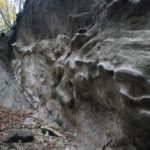The Lulseto stone: A prehistoric sanctuary rock in the Apennines?
Marc
Publication date: 10 February 2017 by CAI Club Alpino Italiano on the suppressed Val Tassaro website.
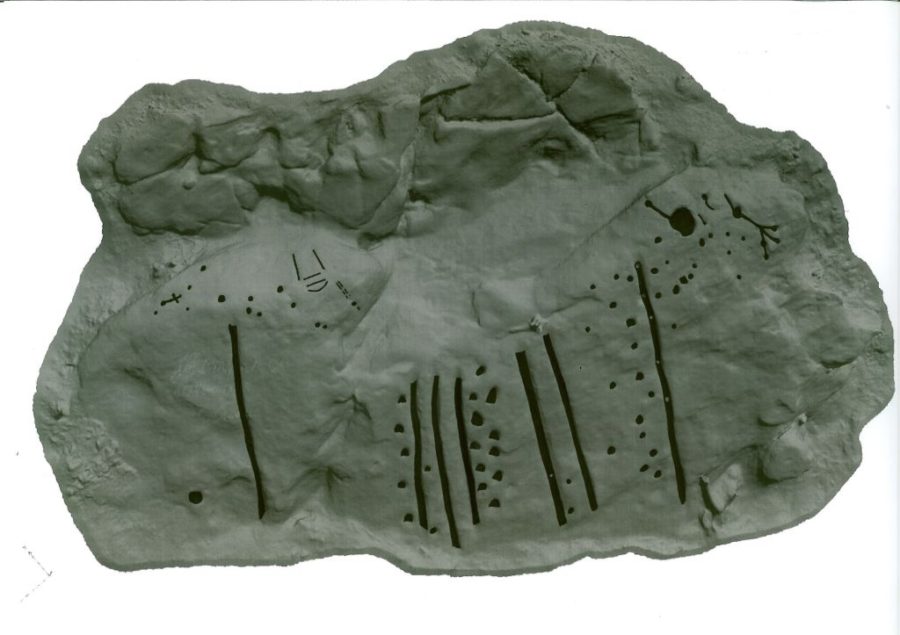
The place of discovery in the heart of the Tassaro valley, one of the most beautiful locations in the Reggio Emilia mountains, located in the municipality of Vetto, a large rocky surface was recently discovered whose surface is furrowed by a complex series of signs and engravings. The discovery was made by the Scientific Committee of the Reggio Emilia section of the Italian Alpine Club which during a reconnaissance came across a series of deep grooves dug into the rock, almost completely hidden by vegetation and covered by moss. The older inhabitants of Val Tassaro knew this large engraved stone well: in fact, they remember that as children it was their favorite place to play, having fun sliding along the deep grooves engraved in the stone, but nothing more.
The investigation and the signs identified
After the first discovery, it was decided to proceed with cleaning the rocky surface, removing the mantle of moss that largely hid it: an unexpected scenario was thus opened which suddenly projects us to the remote era in which the man practiced rock worship. In fact, in addition to the seven deep linear incisions that furrow the rock, the experts of the Scientific Committee have brought to light numerous cupels connected to small channels, stone basins, channels and strange quadrangular incisions: an unexpectedly rich and varied figurative set which, according to the experts, it would be attributable to an unprecedented, very ancient place of worship, perhaps the only one identified so far in the Emilian Apennines. To better study and interpret this large figurative complex, the CAI contacted Dr. Mancassola and Dr. Zoni of the University of Bologna to carry out a survey with the modern laser scanner technique. To this end it was necessary to carry out a demanding work of cleaning the boulder and thinning out the vegetation, subject to authorization from the owners. In this way, in August 2016, it was possible to prepare a very accurate survey of the engraving complex, thanks to which numerous other petroglyphs were identified on the surface of the rock, which were no longer visible to the human eye due to the deep erosion of the rock.
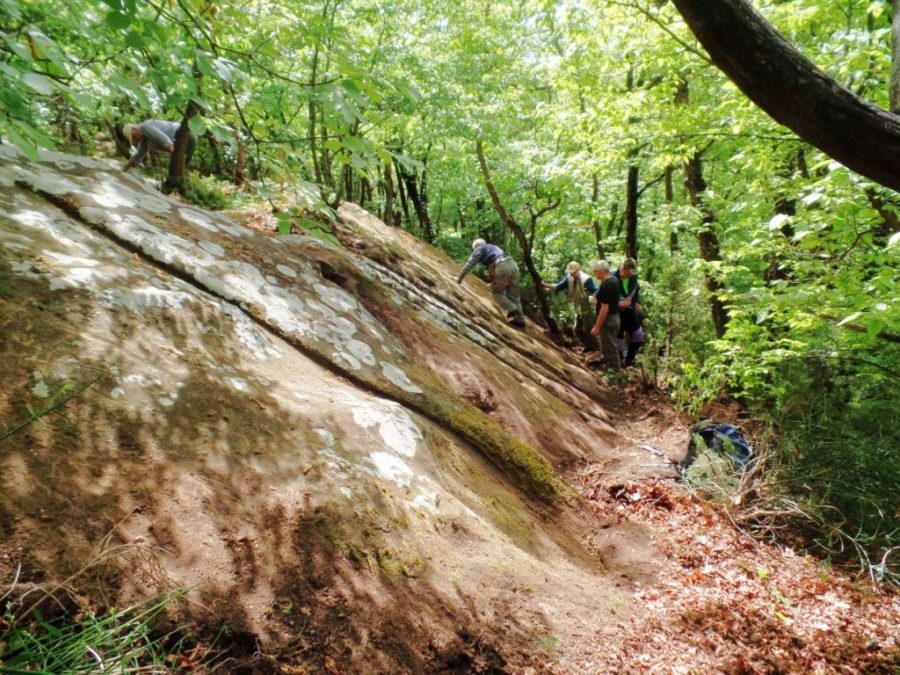
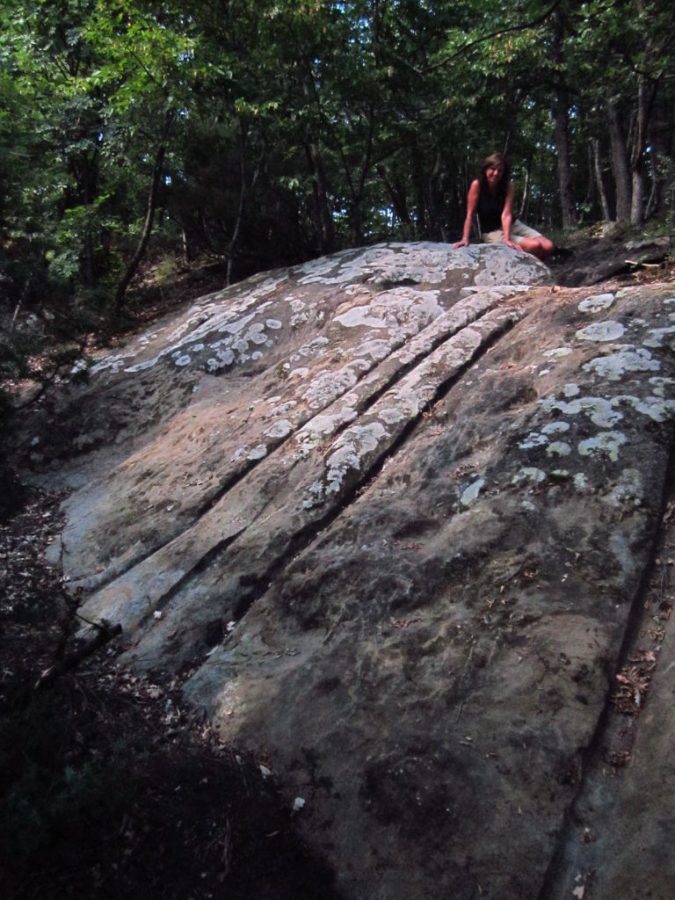
Interpretative hypotheses
The first interpretative hypothesis was put forward by Dr Alfonso Zavaroni, a well-known scholar of rock engravings, who identified an ancient cult site in the Lulseto boulder, also finding agreement with numerous other researchers who were subsequently contacted and in the same scientific bibliography that we consulted. In fact, there are numerous and well-diversified aspects that contribute to supporting this interpretation: first of all its location; in fact it is located on the top of a steep hill which directly overlooks the ancient church of Crovara in Val Tassaro; its surface faces exactly west, and, a truly exceptional fact, it is entirely surrounded by an evergreen forest dominated by Erica arborea, a plant species typical of the warm Mediterranean climate which instead on the summit of this mountain unexpectedly finds optimal survival conditions, also creating midwinter the image of a lively and lush forest while all around the “dead” and bare trunks of deciduous plants stand out. Finally, a short distance away there is an ancient spring. In other words, the site where the sculpted boulder is present presents all the characteristics of the ancient places of prehistoric veneration: being on the top of a relief (“sacrality of the peaks”), being placed inside an evergreen forest, regardless of the cycle of the seasons, being oriented in relation to the cycle of the sun and, finally, proximity to a source.
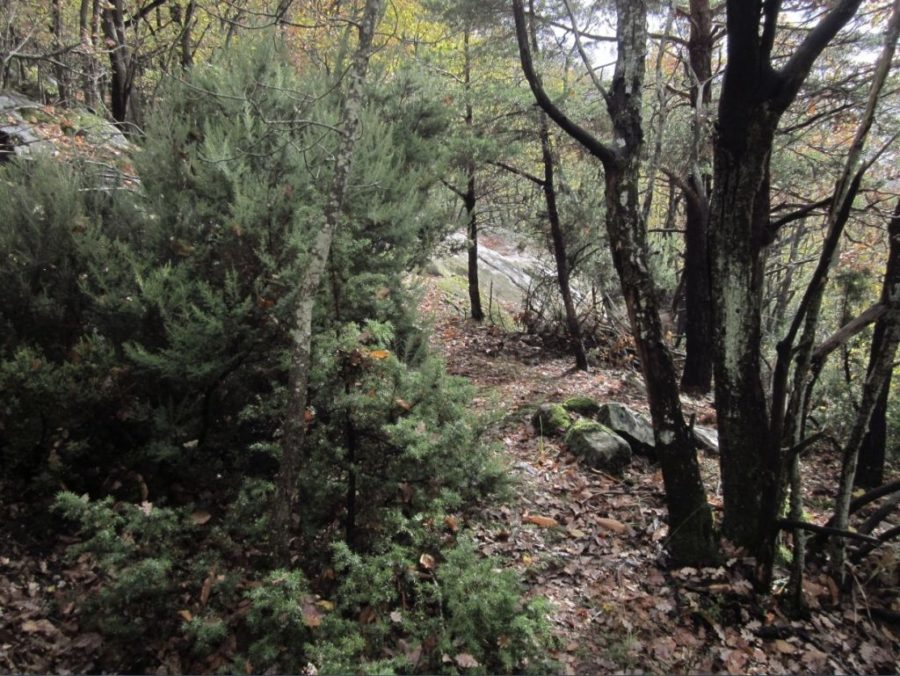
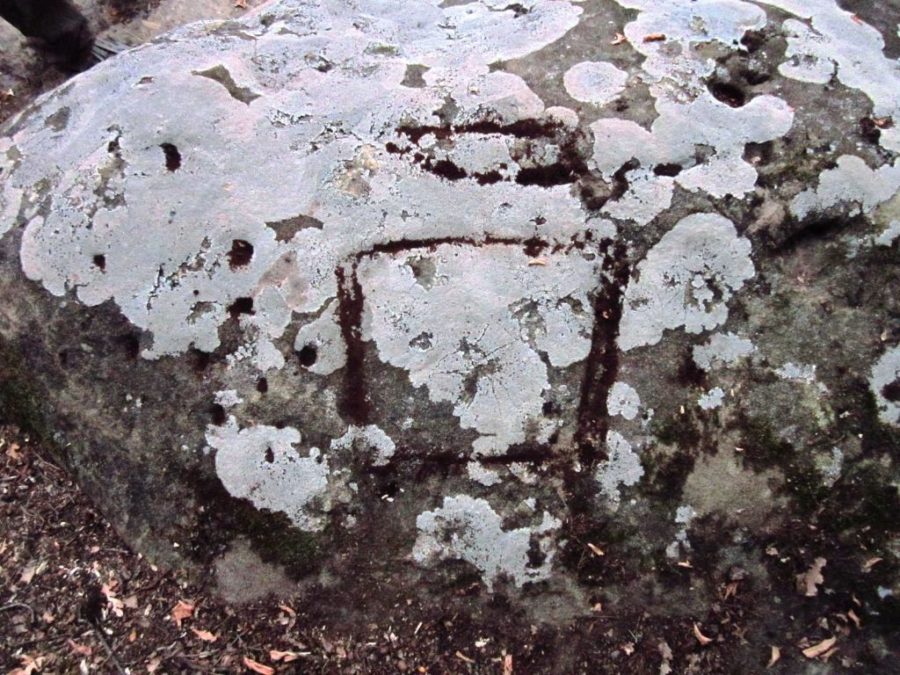
The grooves
The experts interpreted the seven deep grooves that cross the entire stone for a few meters from top to bottom, as ritual channels with mantic and divinatory purposes, along which water or other sacrificial liquids were made to flow, then drawing auspicious by how the liquid flowed into the grooves. Other scholars, however, are more inclined to the bloody sacrificial hypothesis according to which the blood of the sacrificed animal or human being flowed slowly, flowing between cupels and channels, providing wishes of the opposite nature depending on the directions taken.
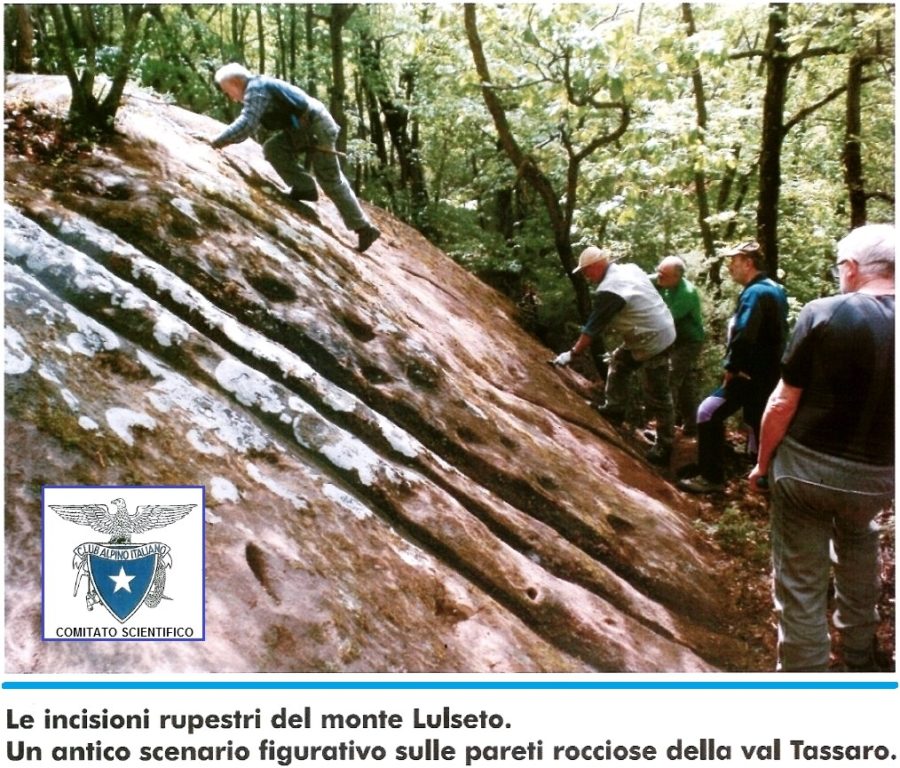
The cupels
“By cupels we mean engravings on rock with a conical, elliptical or circular section of variable diameter and depth which are assumed to be made by rotating a very hard stone, such as flint or quartzite. The cupels and the cupels joined by channels cannot be interpreted: that is, their meaning is not known even if their function as messages is objectively evident. The interpretation of the “cups”, which stand out in several points on the rocky surface, often also connected to each other by small channels, remains more problematic: also in this case the hypothesis is put forward that they could perform a mantic function, filling them of sacrificial liquids. The most well-founded hypothesis therefore seems to be that which sees in the cupels a ritual and religious expression (Coisson-the rock engravings of Val Pelice)
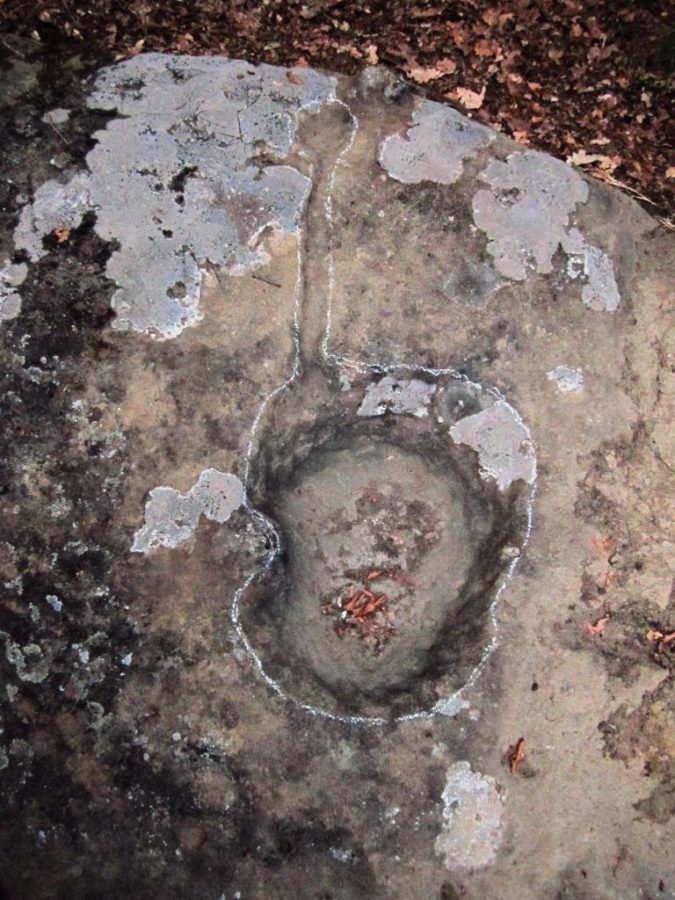
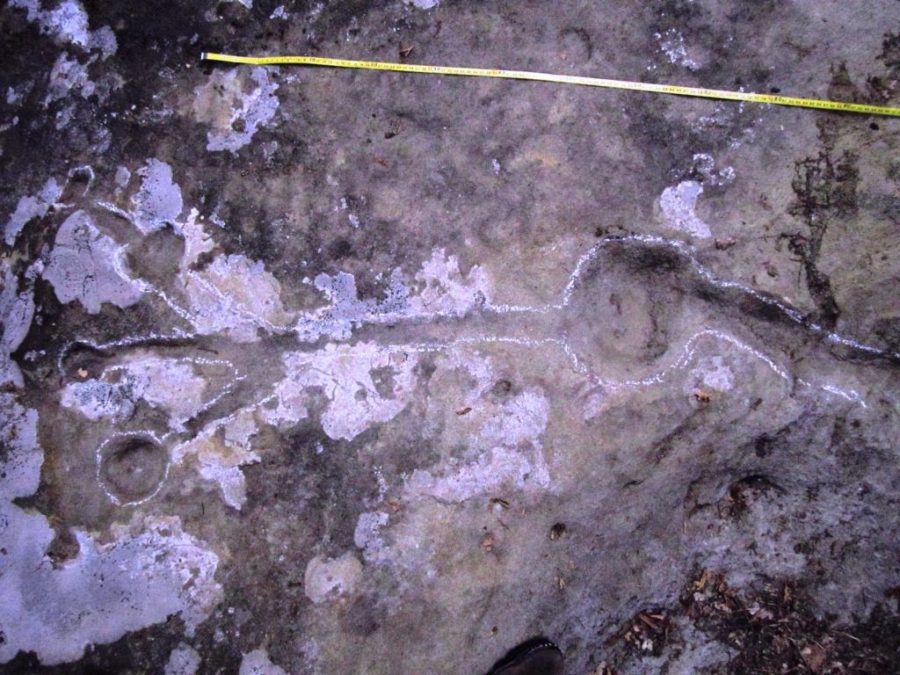
The linear engravings
However, the quadrangular and linear signs that appear in some places still need to be interpreted, also due to the deep erosion, perhaps attributable to very stylized profiles of ancient huts.
The cross of Christianization
One aspect in particular seems to heavily support the hypothesis that the Luseto Stone can be traced back to an ancestral place of worship: during the survey of the petroglyphs, the cross was found which exorcised the entire artefact in a Christian sense; it is clearly engraved on the eastern end of the stone, above the entire sculpted surface, unequivocally transmitting the message of the “damnatio memoriae” towards the pagan idolatrous practices that probably continued to be practiced here until the dawn of Christianity’. The presence of the cross as a function of Christianization of “pagan” places of worship constitutes a constant in the panorama of petroglyphs in the Alpine area and finds an explicit reference to the dictates of the councils of Arles (452), Tours (567), Toledo (681) who issued decrees condemning the “stone worshipers”. Starting from the first centuries of Christianity we are therefore witnessing an incisive and widespread operation of revisionism, which finds its maximum and most evident attestation with the affixing of the Christian cross on the stones of the “pagan sanctuaries”. The “saxorum veneratio”, already stigmatized by the leaders of the church since the 5th century, nevertheless continued to express itself for a long time in the mountain territories.
The cultural context
the concept of animism of primitive populations and that of the open-air temple of the Celts, the choice of sacred places in dominant positions among all prehistoric and historical peoples, the stone as an altar testify to a cultural and religious uniformity among the European populations who lived between the end of prehistory and protohistory “We must, in this regard, underline the same linguistic root of Celtic origin of the Apennines: direct expression of Celtic veneration of the god of the peaks “Pen”. It is also necessary to highlight another characteristic of the Monte Lulseto engraving complex: its signs and characteristics are widely reflected in the Alpine arc, in which the presence of a large number of engraved boulders with similar features has been documented over a long time. Since the end of the 19th century, numerous Lombard and Piedmontese scholars have documented these complex engravers, tracing them back to a very vast time span between the Upper Paleolithic and the late Roman period, but dating them mainly to the Bronze Age and the period of Celtic culture. In the case of Lulseto we therefore find ourselves within a vast prehistoric cultural horizon, which however has not yet been documented in the northern Apennines and of which it perhaps constitutes the first important evidence. The Lulseto Stone demonstrates that even in the Emilian Apennines there are testimonies of the pre-protohistoric civilization of petroglyphs: unlike the Alpine arc, however in the Apennine area there is a strong limiting conditioning, due to the presence of arenaceous rocks which are much more exposed to erosion by atmospheric agents than the hard metamorphic and crystalline rocks of the Alps. On the basis of various testimonies that as the Scientific Committee of the CAI we are identifying in various Apennine localities, we believe that even in our mountains these cult engravings were very widespread, but which were subsequently largely erased by natural erosive processes.
The stone of Fertility
The research conducted on the petroglyphic evidence present in the Alpine area opens up a further interpretative scenario for the Lulseto stone: that of the “boulder of fertility”. In numerous Alpine locations, in fact, until relatively recent times, we witness the perpetuation of the ancient rite of the “fertility slide”. These slides, widely spread in Celtic areas, until quite recently were used by women wishing to procreate and the ritual consisted of letting themselves slide on particular rocks (glissade) which over the centuries became smooth along the route used. In the surroundings of the Val d’Ayas there are slides in Ussel, Machaby and Bard (next to the rock carvings). Under the church dedicated to Saints Peter and Paul in Elvas, north of Bressanone, a large stone full of cupels has been worn by hundreds and hundreds of slips or “rubs” performed by women against sterility and disease. In vain the fury of the religious attempted to close the crack in the large fertility boulder located next to the church of the Holy Spirit in Predoi, Val Aurina. Until a few years ago, the women of the valley rubbed their bellies there, just as they slipped on the stone present in the important archaeological site of Castelfeder in Ora. Only here a hand has engraved a cross, banishing dangerous rites and myths. In fact, women eager for children let themselves slide along these rocks, well identified and chosen for their position. In ancient rural society, the need for children who strengthened the productive capacity of the patriarchal family; women’s fertility was therefore conceived as wax and its own “production”: hence the important value of the religious rite assigned to the request for children addressed to the divinities or pantheistically to the natural forces first and then in the Christian era to the supreme mother, the Madonna. The rituality of the gesture of the slide on the rock is therefore emblematic: it expresses the shared direct contact with the mother goddess par excellence: mother earth, expressed here by her strongest manifestations, namely the rocks.
New scenarios: the Lulseto archaeological park
The experts of the Scientific Committee have extended their research around the “written” stone of Luseto, finding numerous other rock engravings, cupels and mantic channels on other boulders, which together make the Monte Lulseto area a single vast complex completely unexpected prehistoric engraving for our Apennines. The studies are continuing and other research and surveys are underway, in the hope of being able to protect this spectacular set of testimonies with the establishment of an unprecedented archaeological park which would constitute a further prestigious piece to be placed in the splendid naturalistic setting of Val Tassaro.
Guided visits to Lulseto are planned by the Scientific Committee of the CAI and also new superficial research and territorial reconnaissance activities in Val Tassaro: interested parties please get in touch.
Giuliano Cervi (comitato Scientifico CAI)





